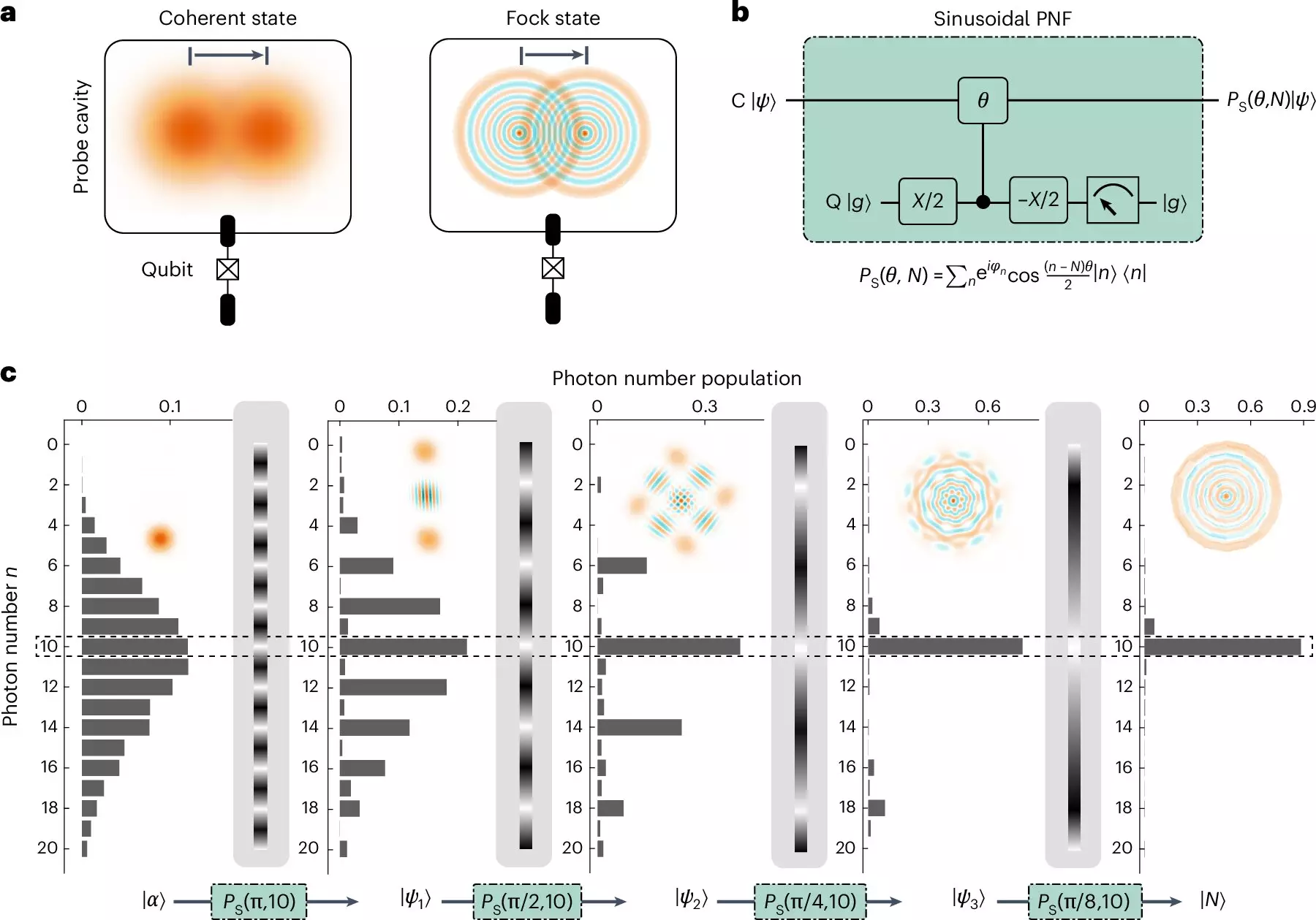Quantum mechanics has revolutionized our understanding of the universe, opening avenues previously deemed inconceivable. Among the most groundbreaking applications of this field is quantum-enhanced metrology, where high-precision measurements are essential for advancing technology and scientific research. Recent developments by researchers at the International Quantum Academy, Southern University of Science and Technology, and the University of Science and Technology of China signify substantial progress in this domain, especially with the ability to generate large Fock states conducive to high-precision measurements.
High-precision measurements serve as the backbone for advancements in various scientific fields, including physics, engineering, and materials science. By utilizing these precise measurements, researchers can substantiate theoretical frameworks, probe new phenomena, and enhance existing technologies. Quantum-enhanced metrology, which aims to transcend the limitations of classical measurement techniques, is particularly important. Traditional methods often suffer from constraints that quantum approaches can evade by exploiting the unusual properties of quantum states.
Despite their immense potential, however, leveraging non-classical states for high-precision measurements presents considerable challenges. The complexities involved in reliably manipulating these states have historically limited the development and application of quantum-enhanced metrology. The introduction of innovative techniques aimed at generating large Fock states marks a pivotal moment in overcoming these hurdles.
At the core of the recent enhancements in quantum metrology are Fock states—quantum states characterized by a well-defined number of particles, such as photons. The work by the aforementioned researchers has demonstrated a method capable of generating Fock states with up to 100 photons, a remarkable feat that positions their approach as a landmark in the field. The implications of this advancement extend beyond mere academic curiosity; they encompass practical applications that may influence technologies ranging from telecommunications to medical diagnostics.
Yuan Xu, co-author of the research, emphasized the utility of microwave Fock states situated in superconducting cavities. These states not only exhibit remarkable interference patterns but also offer the sensitivity needed to detect minimal shifts caused by weak microwave fields. The study reveals that an increase in the photon number of the Fock states correlates with finer interference patterns, directly enhancing the capacity for precision detection.
A key element of the researchers’ breakthrough lies in their novel photon number filtering approach. Using sinusoidal and Gaussian photon number filters, they efficiently generated the large Fock states that underpin their high-precision measurement objectives. The sinusoidal filter employs a conditional rotation process that selectively blocks certain photon numbers, while the Gaussian filter concentrates on desired Fock states through a pulse that compresses the photon number distribution.
This dual-filtering technique not only streamlines the process of generating Fock states but also addresses efficiency concerns previously plaguing quantum measurement methodologies. The logarithmic scaling of circuit depth with respect to photon number affords this method a significant advantage over past proposals that necessitated polynomial scaling. The efficiency gained here is vital, particularly when working with larger photon counts that serve as the cornerstone for high-precision metrology.
One of the outstanding attributes of this method is its versatility. The researchers’ technique is not confined to microwave systems; rather, it shows promise for integration across various physical platforms, including optical and mechanical systems. The researchers believe this adaptability will encourage further exploration within the field, ultimately leading to widespread implementation and discoveries.
Looking ahead, the research team articulated ambitions to enhance the coherence of their quantum systems further. Improved coherence performance will facilitate the deterministic generation of even higher photon number Fock states, paving the way for greater metrological gains. Such advancements could yield groundbreaking outcomes in areas ranging from high-precision radiometry—critical for telecommunications—to exploring passive dark matter detection strategies.
The innovations presented by Xu and his team signal a crucial advancement in quantum-enhanced metrology. Their ability to generate high photon number Fock states efficiently represents a substantial leap toward achieving unprecedented precision in measurements. By offering a promising avenue toward approaching the Heisenberg limit—wherein the precision of measurements is drastically improved—their research lights the path for future explorations in fundamental physics and practical applications alike.
Through this exploration, researchers hope to build on their current findings to unlock new realms of scientific understanding and technological capabilities. As scientific inquiries increasingly hinge on precision, the advancements in quantum-enhanced metrology articulated in this work may have profound impacts across multiple disciplines, reminding us of the intricate relationship between theoretical advancements and practical realities in the quest for knowledge.

